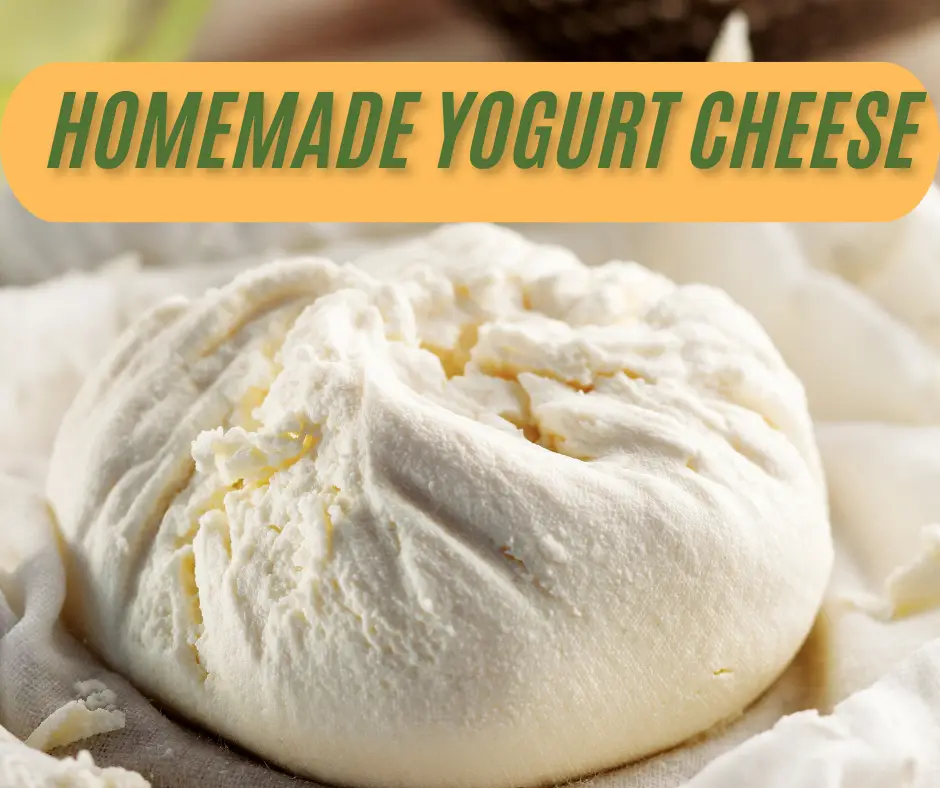Yogurt cheese, also known as labneh, is a delicious and versatile ingredient that can be used in a variety of dishes such as dips, spreads, and even as a substitute for cream cheese. What’s even better is that it’s incredibly easy to make at home, using just two simple ingredients – yogurt and salt. Not only is homemade yogurt cheese cheaper than store-bought, but it also allows you to have full control over the quality and flavor of your cheese.
Once the yogurt has strained, you will be left with a tangy and creamy cheese. At this point, you can choose to add different herbs and spices to add more flavor to your cheese. Fresh herbs like dill, parsley, and chives work well, or you can even add some minced garlic or chopped jalapenos for a spicy kick. Mix in your choice of seasoning to the cheese and shape it into a ball, log, or any desired shape.
In addition to its versatility and delicious taste, yogurt cheese also offers numerous health benefits. It is rich in probiotics, which promote a healthy digestive system and can help boost your immune system. It also contains lower fat and calories compared to other types of cheese, making it a good option for those watching their weight.
1. Use Yogurt Cheese as a Cream Cheese Substitute
Feeling guilty about indulging in your favorite cream cheese spread? Switch it out for yogurt cheese! Its tangy flavor and similar texture make it a great substitute in dishes like bagels and toast. You can also use it to make a healthier version of cheesecake or as a filling for stuffed pastries.
2. Make a Creamy Dip or Dressing
Yogurt cheese can be easily turned into a flavorful dip or dressing for your next party or gathering. Simply mix in some herbs and spices, such as garlic, dill, or curry powder, and serve with your favorite veggies, chips, or pita bread. You can also use it as a base for creamy salad dressings or to add a tangy twist to your sandwiches and wraps.
3. Add it to Baked Goods
Yogurt cheese can be used to add moisture and flavor to baked goods such as cakes, muffins, and bread. Simply replace the butter or oil in your recipe with an equal amount of yogurt cheese for a healthier and tangier option. You can also use it as a topping for freshly baked bread, adding a hint of tang and creaminess.
4. Use Whey in Marinades
The whey that is left behind after straining the yogurt cheese is a great ingredient to use in marinades for meat, chicken, and fish. Its acidic properties help to tenderize the meat while adding a subtle tang to the flavor profile. You can also use it as a base for a tangy salad dressing or in smoothies for an extra boost of protein and probiotics.
5. Make Pickles
Instead of using traditional brine to make pickles, try using whey instead. The whey provides the same level of acidity as the brine, resulting in pickles that are just as delicious and tangy. You can also use whey to make pickled vegetables like kimchi or sauerkraut.
6. Use the whey to Ferment homemade Mayo or Ketchup.
The whey from homemade yogurt cheese can be used to ferment homemade mayo and ketchup. The acidity of the whey helps to prevent any harmful bacteria from growing in the mayo and ketchup, while also adding a tangy flavor. Simply add a small amount of whey to the mayo or ketchup mixture and let it sit for a few hours to allow fermentation to occur before refrigeration. This method can also be used to ferment other homemade condiments, such as mustard or barbecue sauce. Just be sure to use fresh whey and follow proper food safety guidelines. Enjoy your tangy and probiotic-rich condiments!
Homemade Yogurt Cheese
Equipment
- 1 bowl
- 1 colaner
- cheese cloth or a flour sack towl
Ingredients
- 1 Large container of plain yogurt not light pr fat free and not greek
- 1 tsp Kosher salt optional
Instructions
- Before we get started, I like to use my whey for a lottof different things, so if you do not want your whey to be salty then do not add the salt.
- If using salt, place your yogurt in a large bowl and add the salt. The salt not only adds flavor to the cheese but also helps to draw out the excess moisture. Mix the salt and yogurt well until it is fully incorporated. If not adding salt simple start with the next step!
- Strain the yogurt to remove the excess liquid. You can use a cheesecloth or a flour sack towel for this process. Line a large colander with the cloth allowing the edges to han aover and place it over a large bowl. Pour the yogurt onto the cloth-lined colander and fold the cloth over the yogurt set something heaveyin top like a can of tomatoes. Allow it to strain for 24 hours in the refrigerator. The longer you strain, the thicker and more concentrated your yogurt cheese will be.
- Once the yogurt has strained, you will be left with a tangy and creamy cheese. At this point, you can choose to add different herbs and spices to add more flavor to your cheese. Fresh herbs like dill, parsley, and chives work well, or you can even add some minced garlic or chopped jalapenos for a spicy kick. Mix in your choice of seasoning to the cheese and shape it into a ball, log, or any desired shape.
cream cheese
- If you did not salt your yogurt before srtaing do it now.
- To add salt now simply Unwrap the cheesecloth and place cream cheese into a mixing bowl, sprinkle with salt, and mix until smooth and thoroughly combined.
- Line a 4 1/2-ounce ramekin or a small bowl with 4 thin layers of clean cheesecloth. Spoon the salted cream cheese into the ramekin, avoiding creating air pockets. I have little containers for this with a tight-fitting lid because you will still want to keep pressure on. So fold over the cheesecloth and secure with a tight-fitting lid.
- Refrigerate to press and age the cream cheese for 2 days.
- Unwrapp when you are ready to use.


